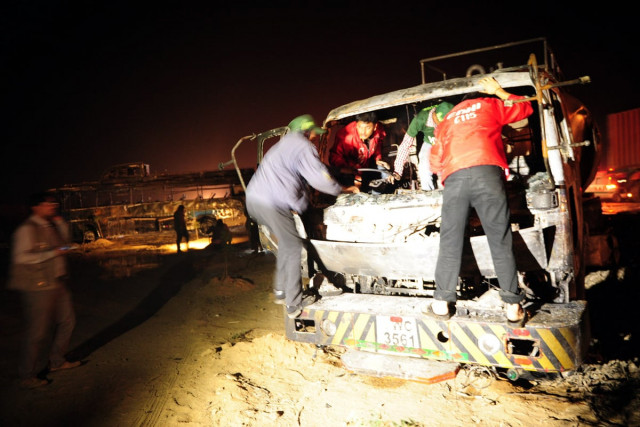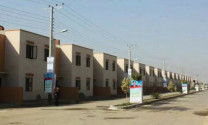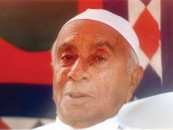Shrug it off: The orphaned link roads
Authorities point fingers at each other as traffic accidents rise on link roads and bypasses

Authorities point fingers at each other as traffic accidents rise on link roads and bypasses. PHOTO: AFP
For a road to serve its purpose, it must have proper features such as lane markings, cat eyes, sign boards showing speed limits and diversions as well as signal markings. These features, that are designed to aid the driver, are all the more important on highways where the speed limits are higher and the chances of fatal injuries in case of accidents are considerably increased.
Another important aspect to bear in mind is the regular maintenance of the road — the constant wear and tear due to the movement of heavy vehicles warrants frequent repairs and leveling of the roads to get rid of potholes and craters that can be hazardous for speeding vehicles.
Installing these features and repairing the thoroughfares fall under the purview of the relevant authority under whose jurisdiction the road falls — the municipal corporations if the road is within their jurisdiction, the cantonment boards, the Defence Housing Authority or the National Highway Authority (NHA) for the highways. Though these roads are in no perfect state, the link roads and bypasses connecting the highways to major cities are in an even more deplorable condition. One major reason for this is that no one is willing to own these roads — the local administration and the NHA have categorically refused to shoulder the responsibility for these thoroughfares, where a large number of fatal accidents have been witnessed in the last few years. The latest such incident at the Kathore Link Road claimed 62 lives.

“First of all, let me make it clear to you that the Kathore Link Road, as well as the other link roads, does not fall under the jurisdiction of the NHA” said the authority’s general manager Samiur Rehman. He added that the development of infrastructure and maintenance of these link roads was also not NHA’s responsibility. “You would do well to question someone else,” he said, when asked who then was taking care of the maintenance of these roads.
Rehman explained that in Karachi, only the Lyari Expressway, the Super Highway from Sohrab Goth onwards and the National Highway from the Pakistan Steel Mill onwards, were the responsibility of the NHA.
However, Malir district municipal corporation administrator Zahir Abid told The Express Tribune that the Kathore Link Road was initially developed by the NHA, therefore its maintenance and development of infrastructure was also their responsibility. “But due to the frequent accidents on this major thoroughfare, the civic authorities have asked us to take charge of it.” Abid added that now that they had taken ownership of the road, they would convert it into a dual carriageway and also install state-of-the-art infrastructure along it.
Malir’s deputy commissioner Jan Muhammad Qazi also agreed that the link roads were indeed their responsibility. Referring to the Kathore Link Road accident, the DC admitted that everyone was collectively responsible for the tragic accident, seeing the terrible condition of the thoroughfare. “In a meeting at Governor House last month, it was decided to build a dual-carriage road at this junction to ease the flow of traffic,” he said. “We know the importance of this road and are determined to build it as soon as possible.”
Law enforcement
Though the enforcement of law on the highways is solely the job of the motorway police, they also refuse to shoulder this responsibility on the link roads.
The motorway police spokesperson, Farhan Ahmed, said that law enforcement on all link roads, such as the Kathore Link Road, the Northern Bypass and the Jamshoro Bypass, was the responsibility of the local police.
Published in The Express Tribune, January 22nd, 2015.



















COMMENTS
Comments are moderated and generally will be posted if they are on-topic and not abusive.
For more information, please see our Comments FAQ